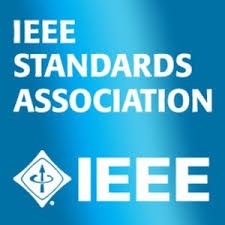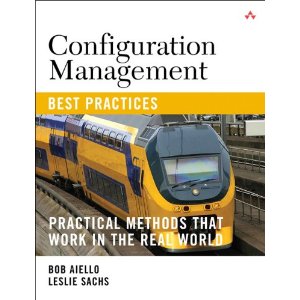Personality Matters—CM Excellence
By Leslie Sachs
Excellence in Configuration Management conjures up images of efficient processes with fully automated procedures to build, package and deploy applications resulting in happy users enjoying new features on a regular basis. The fact is that continuous integration servers and great tools alone do not make CM excellence. The most important resources are the technology professionals on our team and the leader who helps guide the team towards excellence. That doesn’t mean that everyone is (or can be) a top performer, even if you are blessed with working on a high performance cross-functional team. What it does mean is that understanding the factors that lead to excellence will enable you to assess and improve your own performance. A good place to start is to consider the traits commonly associated with effective leadership and successful results. This article will help you understand what psychologists have learned regarding some of the essential qualities found among top leaders and others who consistently achieve excellence!
Software Process Improvement (SPI) is all about identifying potential areas of improvement. Achieving excellence depends upon your ability to identify and improve upon your own behavior and effectiveness. It is well-known that we are each born with specific personality traits and innate dispositional tendencies. However, it is an equally well-established fact that we can significantly modify this endowment if we understand our own natural tendencies and then develop complementary behaviors that will help us achieve success!
Let’s start by considering some of the personality traits that help predict effective leadership. One of the first studies on effective leadership was conducted by psychologist Ralph M. Stogdill [1]. This early study identified a group of traits including intelligence, alertness, insight, responsibility, initiative, persistence, self-confidence, and sociability. It is certainly not surprising that these specific traits are valuable for successful leaders and achieving excellence. Being intelligent speaks for itself and of being alert (for new opportunities) and having insight into the deeper meaning of each situation and opportunity. Although general intelligence was for a long time considered static, more recent research suggests that it is possible to bolster one’s genetic inheritance. Certainly, one can consciously strive to develop the behavioral patterns, such as attentiveness to detail and novelty and thoughtful analysis of options, closely associated with intelligence.
You might want to ask yourself whether or not you are responsible, take initiative and show persistence when faced with difficult challenges. Displaying self-confidence and operating amiably within a social structure is essential as well. Do you appreciate why these characteristics are essential for leadership and achieving success and look for opportunities to incorporate these qualities into your personality? To improve your leadership profile, you must also actively demonstrate that you know how to apply these valuable traits to solve real workplace dilemmas. Upon reflection, you can certainly see why CM excellence would come from CM professionals who are intelligent, alert and insightful. Being responsible, showing initiative and being persistent along with having self-confidence and being a social being are all clearly desirable personality traits which lead to behaviors that result in CM excellence.
Stogdill conducted a second survey in which he identified ten traits which are essential for effective leadership. This expanded cluster includes drive for responsibility, persistence in pursuit of goals, risk-taking and problem-solving capabilities, self-confidence, and a drive for taking initiative. In addition to these, Stogdill also discovered that people’s ability to manage stress (such as frustration and delay) as well as their accountability for the consequences of their actions are both integral to leadership success. After all, intelligence, insight, and sharp analytic skills are not very useful if a manager is too stressed out to prioritize efficiently or authorize appropriate team members to implement essential programs Finally, you need to be able to influence other people’s behavior and to handle social interactions. [2] Other noted psychologists have also studied leadership traits and many have identified similar traits.
Jurgen Appelo lists 50 team virtues [3] which, not surprisingly, also correspond to many of the traits identified in Stogdill’s studies and I discussed many of these same traits in the book that I coauthored with Bob Aiello [4]. You need to consider each of these traits and understand why they are essential to leadership and achieving success. Keep in mind that while people are born with natural tendencies, each of us is capable of stretching beyond them if we understand our own personality and identify which behaviors are most likely to lead to the changes we desire. So if you want to achieve greater success, consider reflecting upon your own behaviors and comparing your style with those traits that have been associated repeatedly with good leaders and CM excellence. For example, being proactive in solving problems and having the self-confidence to take appropriate risks can help you achieve success. Remember also that being social means that you involve and interact with your entire team- full team participation maximizes the power of each member’s strengths while minimizing the impact of individual weaknesses.
Configuration Management excellence depends upon the skilled resources who handle the complex IT demands on a day-to-day basis. The most successful professionals are able to take stock of their personality and consider the traits that experts regard as essential for effective leadership. If you can develop this self-awareness, you can achieve success by developing the behaviors that result in strong leadership and excellence in all you do!
References:
[1] Yukl, Gary, Leadership in Organizations, Prentice Hall, 1981, p. 237
[2] Northouse, Peter G., Introduction to Leadership Concepts and Practice Second Edition, SAGE Publications, Inc 2012, p. 17
[3] Appelo, Jurgen, Management 3.0 – Leading Agile Developers, Developing Agile Leaders. Addison-Wesley, 2011, p. 93
[4] Aiello, Robert and Leslie Sachs. Configuration Management Best Practices: Practical Methods that Work in the Real World. Addison-Wesley, 2010




























